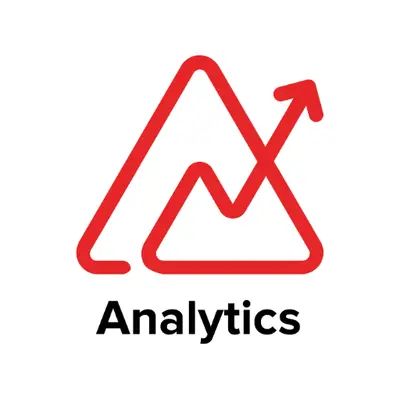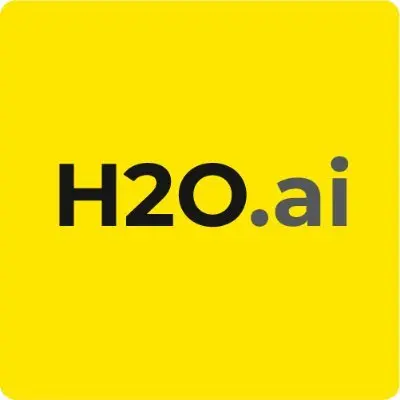AI Data Tools
Transform your analytics workflow with the best AI data tools of 2025. From automated spreadsheet analysis to no-code machine learning, discover platforms that boost productivity by 63% and democratize data insights across your entire organization.
Spreadsheet AI
AI-powered spreadsheet tools that automate analysis and formula creation
 🏆 Editor Pick
🏆 Editor Pick
Microsoft Excel Copilot
AI assistant that transforms Excel with natural language analysis
• Microsoft 365 Visit Website for Microsoft Excel Copilot 🏆 Editor Pick
🏆 Editor Pick
Google Sheets with Gemini
Gemini AI integration for automated insights and formulas
• Free/Workspace Visit Website for Google Sheets with Gemini 🔥 Popular
🔥 Popular
Formula Bot
AI formula generator for Excel and Google Sheets
• Freemium Full Details for Formula Bot 🔥 Popular
🔥 Popular
Zoho Sheet with Zia AI
Intelligent spreadsheet with Zia AI assistant
• From $3/user Visit Website for Zoho Sheet with Zia AIData Visualization
Transform raw data into stunning visual insights with AI assistance
 🏆 Editor Pick
🏆 Editor Pick
Tableau
Industry-leading visual analytics with AI-powered insights
• From $75/user Full Details for Tableau 🏆 Editor Pick
🏆 Editor Pick
Power BI
Microsoft's business analytics with AI-driven features
• From $10/user Visit Website for Power BI 🔥 Popular
🔥 Popular
Zoho Analytics
Self-service BI platform with AI assistant Zia
• From $24/mo Visit Website for Zoho Analytics 🔥 Popular
🔥 Popular
Domo
Cloud-based business intelligence with AI insights
• Custom Pricing Visit Website for DomoNo-Code Machine Learning
Build and deploy ML models without writing a single line of code
 🏆 Editor Pick
🏆 Editor Pick
DataRobot
Enterprise AI platform for automated machine learning
• Enterprise Full Details for DataRobot 🏆 Editor Pick
🏆 Editor Pick
Google Cloud AutoML
Custom ML models with Google's advanced AI technology
• Pay-as-you-go Visit Website for Google Cloud AutoML ✨ New
✨ New
Microsoft Azure ML Studio
Drag-and-drop ML development with Azure integration
• From $9.99/mo Visit Website for Microsoft Azure ML Studio ✨ New
✨ New
H2O.ai
Open-source AutoML platform for enterprise AI
• Free/Enterprise Visit Website for H2O.aiThe AI Data Revolution: $132.9 Billion Market Transforming Analytics
The landscape of AI data tools has reached an inflection point in 2025, with the global data analytics market projected to reach $132.9 billion by 2026 at an impressive 30.08% CAGR. This explosive growth reflects a fundamental shift in how organizations approach data analysis, with 90% of companies achieving measurable value from their data analytics AI investments. The democratization of data through AI-powered platforms has transformed analytics from a specialized skill to an accessible business capability.
Productivity Gains: The 63% Advantage
Organizations implementing spreadsheet automation and AI-enhanced analytics report productivity increases of 63%, fundamentally changing the economics of data-driven decision making. This remarkable efficiency gain stems from AI's ability to automate routine analysis tasks, surface hidden insights, and enable natural language queries that eliminate the need for complex SQL or programming knowledge. Modern data visualization tools powered by AI can automatically identify patterns, suggest optimal chart types, and create interactive dashboards that would previously require days of manual work.
The integration of no-code machine learning platforms extends these capabilities even further, enabling business users to build predictive models without writing a single line of code. This democratization of advanced analytics means that domain experts can directly apply machine learning to their specific challenges, eliminating the traditional bottleneck of data science resources and accelerating time-to-insight dramatically.
Strategic Implementation for Maximum Impact
Success with AI analytics platforms requires thoughtful implementation aligned with organizational data maturity. Start by identifying high-impact use cases where automated data analysis can deliver immediate value—financial forecasting, customer segmentation, and operational optimization typically offer quick wins. From there, expand into more sophisticated applications like predictive maintenance, demand forecasting, and real-time anomaly detection.
The $5.2 billion no-code AI market, growing at 23% CAGR through 2030, signals the increasing accessibility of advanced analytics capabilities. Organizations that invest in comprehensive business intelligence AI platforms today position themselves to capitalize on this growth while building sustainable competitive advantages through data-driven insights.
Democratizing Data: Self-Service Analytics for Every Department
The vision of self-service analytics has become reality in 2025, with AI-powered platforms enabling all departments to make data-driven decisions without technical expertise. Modern data science tools have evolved beyond traditional business intelligence, offering intuitive interfaces that translate complex queries into simple conversational requests. This transformation means marketing teams can analyze campaign performance, HR departments can predict turnover, and operations can optimize workflows—all without waiting for IT or data science support.
Breaking Down Data Silos with AI
Traditional analytics workflows created organizational bottlenecks where insights remained trapped within specialized teams. Today's intelligent data processing platforms break down these silos by automatically connecting disparate data sources, standardizing formats, and creating unified views accessible to all stakeholders. Tools like Microsoft Excel Copilot and Google Sheets with Gemini exemplify this shift, bringing sophisticated analysis capabilities directly into familiar spreadsheet interfaces.
The impact extends beyond simple data access. AI data tools now provide contextual recommendations, explain statistical significance in plain language, and alert users to potential data quality issues. This intelligent assistance ensures that non-technical users can trust their analyses while avoiding common pitfalls that previously required statistical expertise to navigate.
Cultivating a Data-Driven Culture
Successful democratization of data requires more than just deploying tools—it demands cultural transformation. Organizations seeing the greatest returns from data analytics AI investments focus on comprehensive training programs, establish clear data governance frameworks, and celebrate data-driven wins across all departments. This cultural shift transforms data from a specialized resource into a shared organizational asset.
The convergence of spreadsheet automation, visual analytics, and no-code ML creates an ecosystem where every employee can contribute to and benefit from data insights. Companies embracing this democratization report faster decision-making, improved cross-functional collaboration, and the emergence of innovative solutions from unexpected sources within their organizations.
The No-Code Revolution: Machine Learning for Everyone
The emergence of no-code machine learning platforms represents perhaps the most transformative development in the AI data tools landscape. These platforms have eliminated the traditional barriers to advanced analytics, enabling business professionals to build, train, and deploy sophisticated ML models through intuitive visual interfaces. The $5.2 billion market valuation by 2030 understates the revolutionary impact these tools will have on organizational capabilities and competitive dynamics.
From Complexity to Simplicity
Traditional machine learning required teams of data scientists, months of development, and significant infrastructure investments. Modern AI analytics platforms like DataRobot and Google Cloud AutoML compress this process into hours or days, with automated feature engineering, model selection, and hyperparameter tuning. This automation doesn't sacrifice sophistication—these platforms often produce models that match or exceed those created by expert data scientists.
The democratization extends to deployment and monitoring. Business intelligence AI platforms now include one-click deployment options, automated retraining schedules, and intuitive performance dashboards. This end-to-end automation means organizations can maintain dozens or hundreds of models in production without dedicated ML operations teams, fundamentally changing the economics of AI adoption.
Competitive Advantage Through Accessible AI
Organizations leveraging data visualization tools with integrated ML capabilities gain significant competitive advantages. Marketing teams predict customer churn and optimize campaigns in real-time. Supply chain managers forecast demand with unprecedented accuracy. Financial analysts detect fraud patterns that human review would miss. These capabilities, once exclusive to tech giants, now sit within reach of any organization willing to embrace no-code platforms.
As we look toward 2030, the convergence of automated data analysis, natural language processing, and automated ML will create even more powerful possibilities. Imagine asking your analytics platform complex questions in plain English and receiving not just answers, but predictive models, optimization recommendations, and automated implementation plans. This future isn't distant—it's being built today by organizations that recognize data as their most valuable asset and AI as the key to unlocking its potential.
Transform Your Data Workflow with AI-Powered Analytics
The landscape of AI data tools in 2025 offers unprecedented opportunities to democratize analytics and drive data-driven decision making across your organization. With 90% of companies achieving measurable value from their investments and productivity gains of 63%, the question isn't whether to adopt these technologies—it's how quickly you can implement them.
From automated spreadsheet analysis that eliminates formula complexity to no-code machine learning platforms that put predictive analytics in everyone's hands, these tools transform how organizations extract value from their data. Join the data revolution and unlock insights that drive competitive advantage.
Ready to revolutionize your analytics workflow? Explore our comprehensive subcategory pages for detailed reviews, comparisons, and insights on all the latest data analytics AI and intelligent data processing platforms transforming businesses in 2025.
